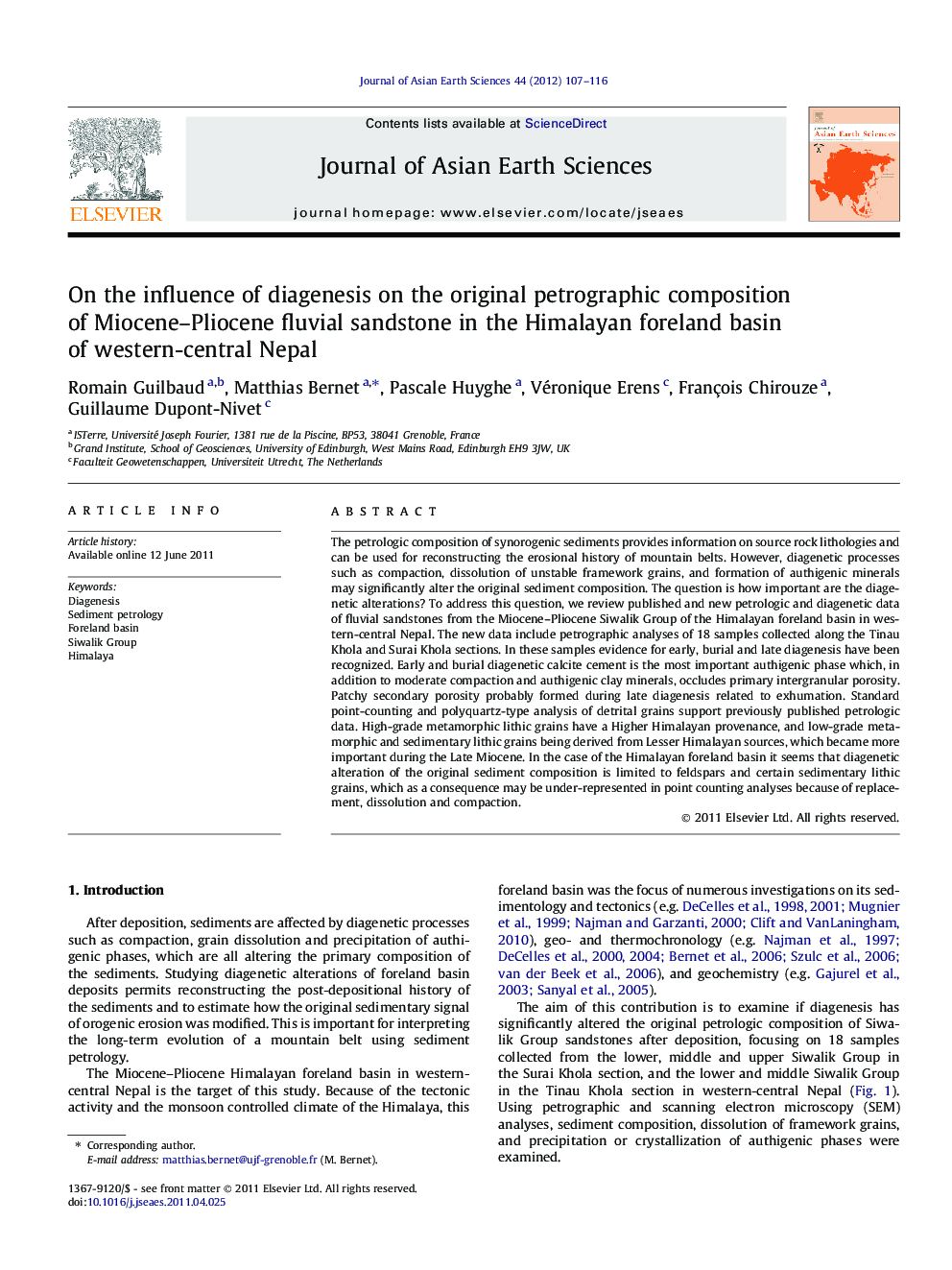| Article ID | Journal | Published Year | Pages | File Type |
|---|---|---|---|---|
| 4731649 | Journal of Asian Earth Sciences | 2012 | 10 Pages |
The petrologic composition of synorogenic sediments provides information on source rock lithologies and can be used for reconstructing the erosional history of mountain belts. However, diagenetic processes such as compaction, dissolution of unstable framework grains, and formation of authigenic minerals may significantly alter the original sediment composition. The question is how important are the diagenetic alterations? To address this question, we review published and new petrologic and diagenetic data of fluvial sandstones from the Miocene–Pliocene Siwalik Group of the Himalayan foreland basin in western-central Nepal. The new data include petrographic analyses of 18 samples collected along the Tinau Khola and Surai Khola sections. In these samples evidence for early, burial and late diagenesis have been recognized. Early and burial diagenetic calcite cement is the most important authigenic phase which, in addition to moderate compaction and authigenic clay minerals, occludes primary intergranular porosity. Patchy secondary porosity probably formed during late diagenesis related to exhumation. Standard point-counting and polyquartz-type analysis of detrital grains support previously published petrologic data. High-grade metamorphic lithic grains have a Higher Himalayan provenance, and low-grade metamorphic and sedimentary lithic grains being derived from Lesser Himalayan sources, which became more important during the Late Miocene. In the case of the Himalayan foreland basin it seems that diagenetic alteration of the original sediment composition is limited to feldspars and certain sedimentary lithic grains, which as a consequence may be under-represented in point counting analyses because of replacement, dissolution and compaction.
► Feldspar alteration during early and burial diagenesis of Siwaliks sandstone. ► Slight impact on original sediment composition. ► Nonetheless feldspar may be unrepresented in point-count analyses. ► Polyquartz type analysis supports standard point-counting analysis.
